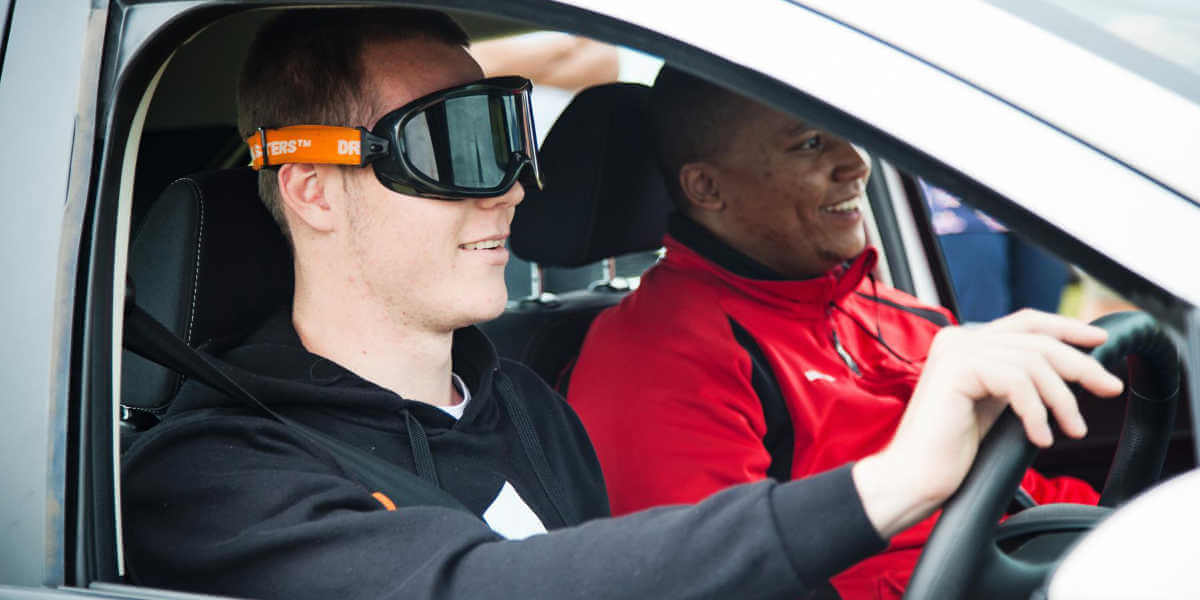Ford’s Driving Skills for Life Programme
Launched in South Africa in 2010, Driving Skills for Life (DSFL) is Ford’s award-winning and free driver training programme developed to raise the standard of safety among South African drivers while rewarding them with essential skills designed to elevate the level of driving in the country.
Article by: Ford
Driving Skills for Life training is conducted with a hands-on curriculum and the innovative programme is available as part of highlighting Ford’s commitment to promoting safety on the road. This week Ford is hosting public drive programs in a bid to create awareness and impart valuable road safety knowledge ahead of the December holiday period.
A total of 1 685 people lost their lives on the country’s roads during the 2021 festive season (according to government statistics), a 14% increase compared to the previous period.
“Safety continues to be a key priority for Ford and providing campaigns such as DSFL can only help reduce the number of road accidents, and increase drivers’ knowledge and confidence on the road,” says Derek Kirkby, Training Director at MasterDrive. “DSFL has grown from strength to strength both locally and internationally and adapts to the needs of the markets in which it operates”.
Driving Skills for Life campaigns have created awareness regarding child car seat safety, hijack extraction, passenger safety, distracted driving, Euro NCAP performance, as well as demonstrating the dangers of drinking and driving – the latter done by using DSFL’s ‘Drunk Goggles’ which allows motorists to experience the alarming effects of impaired vision and judgement in a safe manner.
Ford DSFL has trained more than 1.5 million drivers in 46 countries to date, with an investment of more than $60 million over 19 years.
This training focuses on five primary driving skills: hazard recognition, vehicle handling, speed management and space management, as well as distracted and impaired driving.
1) Hazard Recognition
In Hazard Recognition, the driver learns how to scan for trouble, especially during busy situations such as entering and turning, at an intersection. Key safety zones are identified, and drivers are taught how to minimise distractions so as not to feel overwhelmed.
2) Vehicle Handling
Vehicle handling covers learning to control a vehicle’s balance and the forces acting upon it. Drivers will experience the effect of acceleration and braking on a vehicle’s stability, and driving techniques designed to transition between these smoothly. This helps to maintain good grip and traction. DSFL also teaches drivers how to recover from a skid and the contrasting dynamics between front- and rear-wheel drive vehicles.
3) Space Management
South Africa’s increasingly busy road network makes space management a valuable defence against road accidents. Being aware of the space around the vehicle will lessen the chance of being in a rear-end collision, or having a head-on accident.
4) Speed Management
Excessive speed can endanger not only yourself but those around you. DSFL instructors will help demonstrate these dangerous and reckless driving habits while also showing how active driving aids, fitted to the vehicle, can be complemented by emergency driving techniques.
5) Distracted and Impaired Driving
One of the leading causes of collisions is drunk driving, which has a dramatic impact on the driver’s concentration levels, overall awareness, depth perception and peripheral vision, reaction times and reflexes. To prove the point, the DSFL team uses drunk goggles that simulate the dramatic effects of driving under the influence of alcohol.
Using a cell phone while driving has rapidly become one of the main contributors to traffic accidents, and the Ford DSFL programme highlights the shocking reality of how texting while driving costs lives.
Experts at Ford’s DSFL programme would like to offer motorists the following additional tips for a safer summer this year on SA roads:
For Pedestrians
- Walk on a sidewalk or path. If one is not available, walk on the shoulder, facing traffic.
- Stay alert – don’t be distracted by electronic devices, including smartphones, tablets, and other devices that take your eyes (and ears) off the road.
- Be cautious night and day when sharing the road with vehicles. Never assume a driver sees you as they approach.
- Be predictable. Cross streets at zebra crossings or intersections when possible.
- If a zebra crossing or intersection is not available, locate a well-lit area, wait for a gap in traffic that allows you enough time to cross safely, and continue to watch for traffic as you cross.
- Be visible. Wear bright clothing during the day and wear reflective materials or carry a flashlight at night.
- Avoid alcohol and drug use – they impair your judgment and coordination.
For Drivers
- Motorists need to be vigilant when driving in areas of pedestrian activity. Pedestrians may not be walking where they should be or may be hard to see – especially in poorly lit conditions.
- Always stop for pedestrians at a zebra crossing.
- Never pass vehicles stopped at zebra crossings because they may have stopped to allow pedestrians to cross the street.
- Stay focused and slow down where children may be present, like parks and neighbourhoods.
“With the excitement of the holiday season on everyone’s mind, one must still remain vigilant and careful as the roads become busier and potentially more dangerous. By adhering to these Driving Skills For Life, you can improve your safety on the road, as well as for those around you,” concludes Kirkby.










